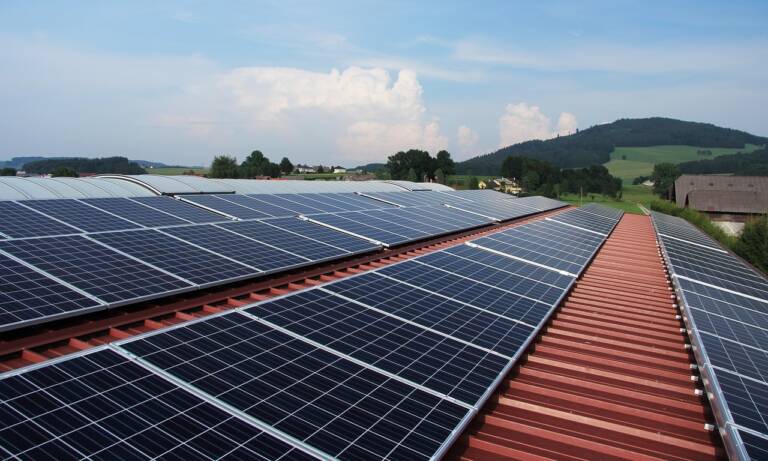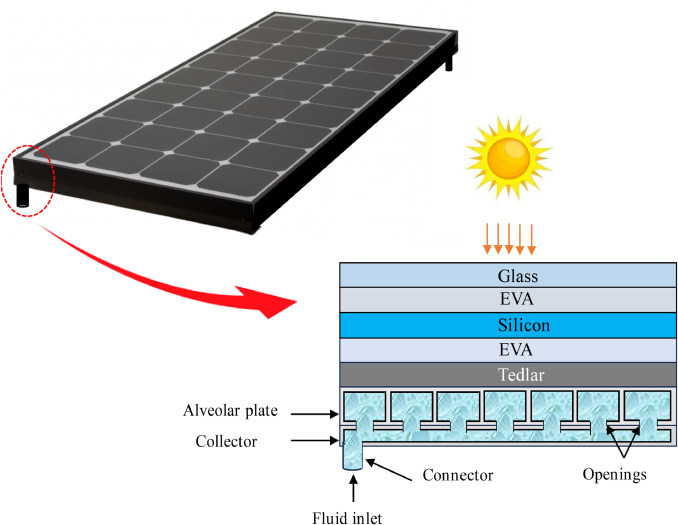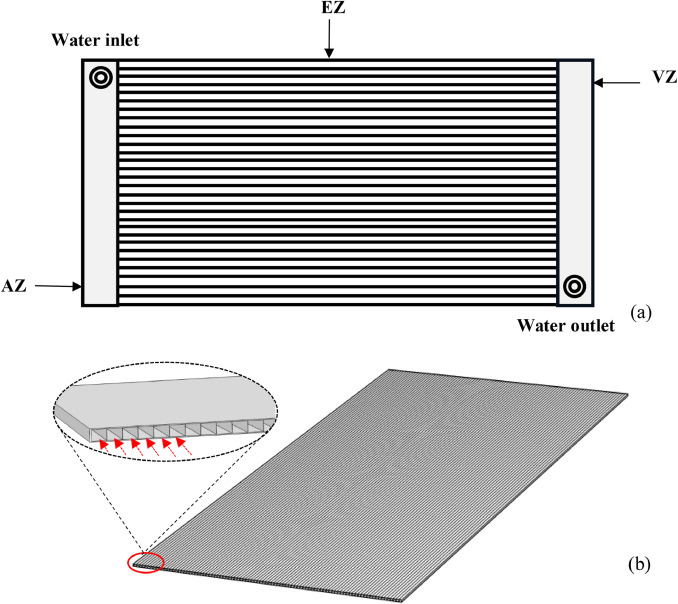The solar panel with 90% electrical-thermal efficiency

Researchers at Chouaïb Doukkali University, Morocco, have made major advances in solar energy technology, developing an innovative type of photovoltaic-thermal (PVT) solar panel.
The creative design improves effectiveness while solving durability issues associated with traditional PVT modules, which are extremely temperature sensitive. The study was published by ScienceDirect .
For the study, the team created a specific channel and box heat exchanger. This element facilitates convective heat exchange, ensuring that the entire surface of the solar panel is in direct contact with the cooling fluid

The photovoltaic-thermal solar panel, and the distribution of the various layers (from ScienceDirect)
This new PVT panel consists of various key components, such as a photovoltaic module, a layer of Tedlar, two transparent layers of ethyl vinyl acetate (o.EVA) and a glass cover plate
“In this work, a new aluminum heat exchanger configuration was designed, composed of 94 channels and fixed directly to the photovoltaic module,” explain the researchers.
Address the problem of heat loss
This project seeks to effectively address the problem of heat loss on solar panels, a frequent challenge that contributes to the deterioration and shorter lifespan of conventional FVT panels.
“This proposal seeks to solve the problem of temperature distribution, which affects the lifespan of photovoltaic panels,” the researchers added.
The heat exchanger, fundamental to the functionality of the panel, is divided into a solid aluminum area and another section into which water flows as a cooling medium.
Furthermore, the heat exchanger is further divided into three parts: refrigerant inlet (AZ), heat exchange (ZE), and fluid evacuation (VZ).
Simulation results and performance improvements
Simulations conducted with COMSOL software yielded encouraging results, indicating that the panel can achieve an electrical efficiency of 12.11%, a thermal efficiency of 78.59% and an impressive overall efficiency of 90.7%.
The simulations highlight the significant impact of the cooling fluid flow rate on the panel performance.
Experiments indicated that for every 10 L/h increase in flow rate, the solar cell temperature decreased by 33.59°F. This decrease in temperature leads to an increase in power output of 0.798 W and an improvement in cell efficiency of 0.051%.
The heat exchange area of the panel is made up of a honeycomb plate with a flat upper wall of 0.4 mm thick in contact with the photovoltaic module and a lower wall of 0.4 mm thick.
“It facilitates optimal heat transfer between the photovoltaic module and the cooling fluid circulating within the channels,” the researchers highlighted. “The proposed PVT-C offers good results in terms of temperature inhomogeneity and overall performance,” they concluded.
A promising future for sustainable energy
Its seamless integration into building structures and adaptability to provide air or water heating make it a versatile addition to sustainable building design.
This innovation in solar panel technology shows promising potential for sustainable energy solutions.
The improved efficiency and durability of this new PVT panel, achieved through innovative design and meticulous testing, could revolutionize the solar energy landscape.

Thanks to our Telegram channel you can stay updated on the publication of new Economic Scenarios articles.
The article The solar panel with 90% electrical-thermal efficiency comes from Economic Scenarios .
This is a machine translation of a post published on Scenari Economici at the URL https://scenarieconomici.it/il-pannello-solare-con-efficienza-elettrico-termica-del-90/ on Thu, 08 Aug 2024 15:27:08 +0000.

